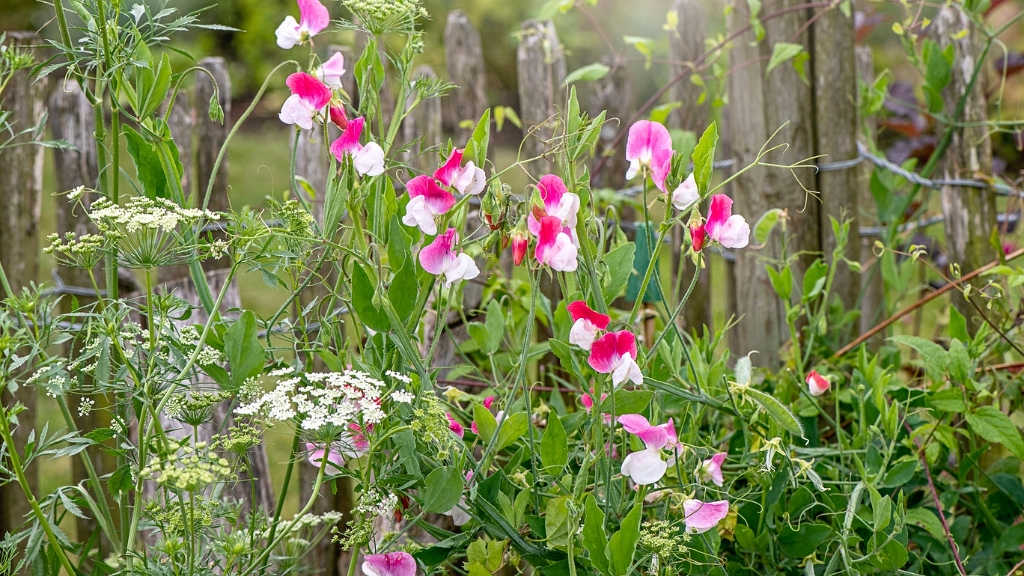Heirloom Sweet Peas: Growing Antique Sweet Pea Plants


Heirloom sweet peas, or Lathyrus odoratus, are an old-time garden favorite. Not to be confused with garden shell peas, all parts of this plant are toxic. That doesn't mean, however, that its growers don't have fond memories of working in the garden planting these fragrant blooms. In recent years, these beautiful and delicate flowers of yesteryear seem to be enjoying a well-deserved and exciting comeback, as a new generation of growers welcome these flowers into their gardens. With this, unique cultivars of antique sweet peas have once again come to the forefront of our flower beds.
Heirloom Sweet Peas
Though there are some perennial varieties of sweet pea, most antique sweet peas available online are considered to be annual flowers. Old-fashioned sweet peas are open-pollinated, which means that they will grow true-to-seed when saved and planted each season. Many heirloom varieties, passed along through generations, are prized for their large and highly fragrant flowers. Some cultivars are even grown specifically to be shown in flower exhibitions. In addition to their early bloom time, fragrance, and attractiveness to pollinators, sweet peas make an excellent addition to cut flower arrangements and landscape plantings.
Growing Antique Sweet Peas
Thriving in cooler temperatures, the success of the plants will greatly depend upon the climate within your own garden. With careful planning, even those who live in warm growing regions can achieve success when growing sweet pea plants.
Since these plants are cool season annuals, the seeds should be planted directly into the garden as soon as the soil can be worked in the spring in cold climate zones or in late fall in areas where the winters are somewhat mild. In these growing zones, the plants will over winter as seedlings and resume growth and bloom when weather begins to warm in the spring. Sweet peas do not tolerate excessive summer heat well and may not bloom if planted too late in the season.
To encourage better germination, soak the sweet pea seeds in water at least 24 hours before planting. Plant the seed according to package instructions into well-draining, weed-free soil. The garden bed should be deeply amended, as the heavy feeding sweet peas are prone to develop long tap roots. Once the plants have 6-8 sets of true leaves, pinch back the growth tip if you wish to encourage more blooms and bushier growth habit. Trellis the plants vertically as they continue to grow. Favorite heirloom sweet pea varieties include:
- 'Dorothy Eckford'
- 'Annie B Gilroy'
- 'Captain of the Blues'
- 'April in Paris'
- 'Spencer Ruffled'
- 'North Shore'
- 'Painted Lady'
Gardening tips, videos, info and more delivered right to your inbox!
Sign up for the Gardening Know How newsletter today and receive a free copy of our e-book "How to Grow Delicious Tomatoes".

Tonya Barnett has been gardening for 13 years. Flowers are her passion. She has transformed her backyard into a cut flower garden, which she regularly chronicles on her YouTube channel http://www.youtube.com/@tonyawiththeflowers.
-
 Grow ‘Karl Rosenfield’ Peony Plants For The Ultimate Frilly Border Beauties And Cut Flowers
Grow ‘Karl Rosenfield’ Peony Plants For The Ultimate Frilly Border Beauties And Cut FlowersFor frilly double magenta peony petals infused with a heady fragrance, grow ‘Karl Rosenfield’ peony plants. Here’s how to cultivate the ultimate plushy blooms
By Tonya Barnett
-
 10 Common Composting Problems That Can Spoil Your Garden Gold – Plus Easy Fixes
10 Common Composting Problems That Can Spoil Your Garden Gold – Plus Easy FixesLearn how to troubleshoot common composting issues before they ruin your stash – from bad smells and bugs to materials not breaking down as they should.
By Susan Albert